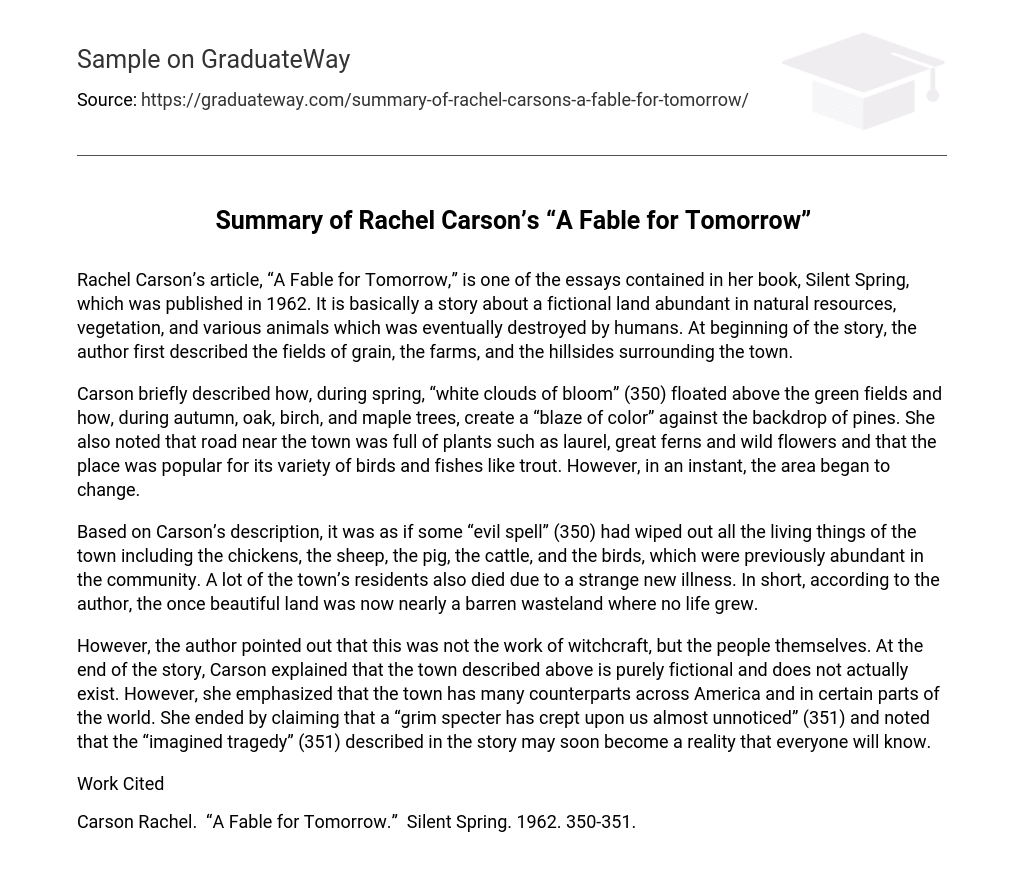Rachel Carson’s article, “A Fable for Tomorrow,” is one of the essays contained in her book, Silent Spring, which was published in 1962. It is basically a story about a fictional land abundant in natural resources, vegetation, and various animals which was eventually destroyed by humans. At beginning of the story, the author first described the fields of grain, the farms, and the hillsides surrounding the town.
Carson briefly described how, during spring, “white clouds of bloom” (350) floated above the green fields and how, during autumn, oak, birch, and maple trees, create a “blaze of color” against the backdrop of pines. She also noted that road near the town was full of plants such as laurel, great ferns and wild flowers and that the place was popular for its variety of birds and fishes like trout. However, in an instant, the area began to change.
Based on Carson’s description, it was as if some “evil spell” (350) had wiped out all the living things of the town including the chickens, the sheep, the pig, the cattle, and the birds, which were previously abundant in the community. A lot of the town’s residents also died due to a strange new illness. In short, according to the author, the once beautiful land was now nearly a barren wasteland where no life grew.
However, the author pointed out that this was not the work of witchcraft, but the people themselves. At the end of the story, Carson explained that the town described above is purely fictional and does not actually exist. However, she emphasized that the town has many counterparts across America and in certain parts of the world. She ended by claiming that a “grim specter has crept upon us almost unnoticed” (351) and noted that the “imagined tragedy” (351) described in the story may soon become a reality that everyone will know.
Work Cited
Carson Rachel. “A Fable for Tomorrow.” Silent Spring. 1962. 350-351.





